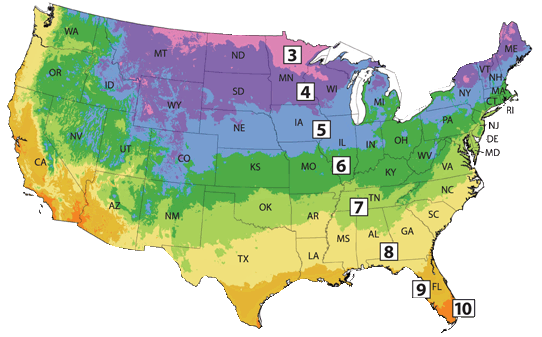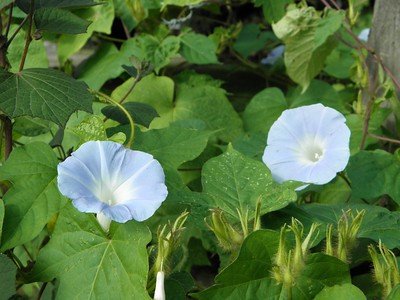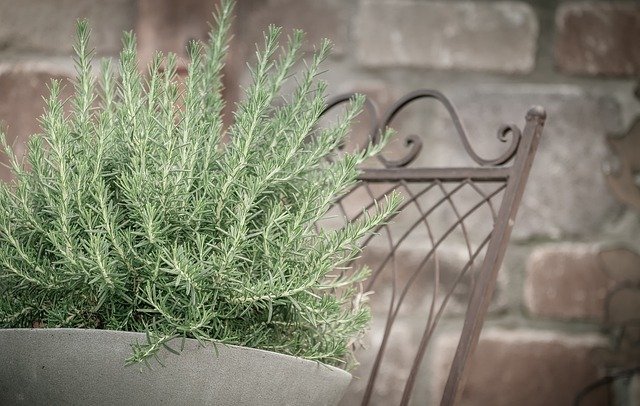Last updated on October 12th, 2023 at 08:27 am
There is something incredibly romantic and whimsical about vine plants with heart-shaped leaves. They add a touch of elegance and grace to any garden or landscape, and they are definitely a sight to behold. If you are looking for a beautiful vine plant with heart-shaped leaves, you have come to the right place.
Table of Contents
Vine plants with heart-shaped leaves.
The most common vine plants with heart-shaped leaves are the following:
Climbing hydrangea, Littlebell, Mile-a-Minute, Possum Grape, Air Potato, Purple Yam , Wild Yam, Graybark Grape, Cissus kerrii, Black Bryony, Hedge Bindweed, Fringed Bindweed, Large Bindweed, Oceanblue Morning Glory, Morning glory , Sweet potato vine, Black-Eyed Susan Vine, and Mexican morning glory.
Climbing hydrangea (Hydrangea anomala subsp. petiolaris)

The heart-shaped leaves of the climbing hydrangea (Hydrangea anomala subsp. Petiolaris) are a beautiful sight in any garden. This vigorous vine is easy to grow and care for and will thrive in US gardening zones 4-8. The climbing hydrangea is a deciduous plant, meaning that it will lose its leaves in winter.
However, it more than makes up for this with its spectacular white flowers, which bloom from June to September. If you are looking for a plant that will add some beauty and interest to your garden, the climbing hydrangea is an excellent choice.
Littlebell (Ipomoea triloba)
Littlebell Ipomoea triloba, also known as Trilobe Morning Glory, is a fast-growing vine native to tropical and subtropical regions. Its growth habit is characterized by its twining or climbing nature, often reaching heights of 6 to 10 feet. The plant displays uniquely three-lobed leaves that add a distinctive touch to its appearance.
These dark green leaves are typically 2 to 4 inches in length and create an interesting texture in gardens or landscapes. Littlebell Ipomoea triloba produces small, bell-shaped flowers in various colors, with a diameter of around 1 inch.
It thrives in full sunlight and well-drained soil, making it a relatively low-maintenance ornamental plant, and it can be grown as an annual in cooler climates or as a perennial in warmer regions.
Gardeners often utilize it to adorn trellises, arbors, or fences, adding a touch of elegance and beauty to their outdoor spaces.
Mile-a-Minute (Mikania micrantha)
Mikania micrantha, commonly known as Mile-a-Minute Vine, is an invasive, fast-growing, herbaceous plant belonging to the Asteraceae family. This aggressive vine is notorious for its ability to rapidly cover and choke out other plants and vegetation in its vicinity.
Mile-a-Minute is aptly named for its rapid growth. It’s a climbing vine that can cover large areas quickly, thanks to its twining stems and a variety of strategies that help it outcompete other plants for resources. It’s known for its incredible growth rate, capable of growing up to 6 inches (15 cm) per day under ideal conditions.
The leaves of Mikania micrantha are typically triangular or heart-shaped, with serrated edges. They’re bright green and arranged alternately along the stems. The leaves are rather distinctive, and their appearance can help in identifying thisinvasive species.
Possum Grape (Cissus verticillata)
Cissus verticillata, commonly known as Possum Grape or Whortleberry Grape, is a woody vine belonging to the grape family, Vitaceae. This vine is native to the southeastern United States and is also found in parts of the Caribbean.
Possum Grape is a climbing vine that can reach lengths of up to 30 feet or more. It typically climbs over other vegetation or structures using its twining stems.
The leaves of Cissus verticillata are compound and whorled, meaning they are arranged in a circle around the stem. Each leaf consists of several leaflets, typically 3 to 5, which are ovate or lance-shaped with serrated edges. The leaves are dark green and can turn red or purple in the fall, creating an attractive display.
Air Potato (Dioscorea bulbifera)
Dioscorea bulbifera, commonly known as Air Potato, is a fast-growing, invasive vine that belongs to the yam family, Dioscoreaceae. This vine is native to tropical and subtropical regions in Africa and Asia. However, it has become a significant invasive species in several parts of the United States and other countries.
Air Potato is a climbing vine that can grow rapidly, covering large areas. It climbs over other vegetation, structures, and trees using its twining stems. The vines can reach lengths of up to 70 feet (21 meters) or more.
The leaves are heart-shaped or arrowhead-shaped and can be quite large, often reaching 4 to 6 inches (10 to 15 cm) in width. They are typically green and have a smooth texture.
Purple Yam (Dioscorea alata)
Dioscorea alata, commonly known as Purple Yam or Greater Yam, is a tropical and subtropical vine belonging to the Dioscoreaceae family. It is primarily grown for its edible tubers, which are known for their distinct purple to violet-flesh.
Dioscorea alata is a climbing vine with a twining or trailing growth habit. It produces long, slender vines that can extend several meters in length. These vines need support or structures to climb, such as trellises or trees.
The leaves of Purple Yam are typically heart-shaped or broadly ovate, and they are alternately arranged along the vines. The leaves are dark green and provide shade to the developing tubers.
Wild Yam (Dioscorea villosa)
Dioscorea villosa, commonly known as Wild Yam, is a perennial climbing vine native to North America. This plant is part of the Dioscoreaceae family and is distinct from other yam species primarily due to its medicinal and historical uses.
Wild Yam is a twining vine with heart-shaped leaves. It can reach lengths of several meters as it climbs over other vegetation and structures.
The leaves are typically alternate and have a broad, heart-shaped appearance with pointed tips. They are usually dark green in color.
Graybark Grape (Vitis cinerea)
Vitis cinerea, commonly known as Graybark Grape, is a species of wild grape native to North America. It is a woody vine that belongs to the Vitaceae family, which also includes the cultivated grape species (Vitis vinifera).
Graybark Grape is a climbing vine with tendrils that help it attach to structures or other vegetation for support. It can grow quite vigorously and may reach lengths of several meters.
The leaves of Vitis cinerea are typically deeply lobed and can vary in shape. They are usually green and turn vibrant colors in the fall, ranging from yellow to red, contributing to their ornamental value.
Cissus kerrii
Cissus kerrii, commonly known as “Miniature Grape” or “Hearts Entangled,” is a small, succulent vine that belongs to the grape family, Vitaceae. This plant is native to Southeast Asia, and it is primarily cultivated as an ornamental houseplant or outdoor vine in regions with a similar climate.
Cissus kerrii is a slow-growing, climbing vine with a trailing or cascading growth habit. It is relatively compact and tends to stay small, making it a popular choice for indoor gardening.
The most distinctive feature of Cissus kerrii is its leaves, which are heart-shaped. The leaves are typically fleshy, glossy, and deep green in color. They resemble Valentine’s Day hearts, making the plant a popular gift choice for loved ones.
Black Bryony (Dioscorea communis)
Dioscorea communis, commonly known as Black Bryony, is a perennial climbing vine native to Europe and western Asia. It is part of the Dioscoreaceae family and is characterized by its distinctive blackish berries.
Black Bryony is a climbing vine that can reach lengths of several meters. It uses its twining stems to climb over other vegetation and structures. It can be found in woodlands, hedgerows, and along the edges of forests.
The leaves of Black Bryony are typically heart-shaped, and they can vary in size, with smooth margins and a deep green color.
Hedge Bindweed (Calystegia sepium)
Calystegia sepium, commonly known as Hedge Bindweed or Hedge False Bindweed, is a perennial herbaceous plant that belongs to the Convolvulaceae family. This plant is native to Europe and is also found in other parts of the world, including North America.
Hedge Bindweed is a climbing or creeping vine with a twining habit. It grows vigorously and can cover large areas quickly. It often twines around other plants and structures for support.
The leaves of Calystegia sepium are typically arrowhead-shaped and have a dark green color. They are alternate and can vary in size but are generally 2 to 5 inches long.
Fringed Bindweed (Fallopia cilinodis)
Fallopia cilinodis, commonly known as Fringed Bindweed, is a herbaceous perennial plant that belongs to the Polygonaceae family. It is native to North America and is often found in various habitats, including grasslands, meadows, and along roadsides.
Fringed Bindweed is a low-growing, trailing or twining vine that forms dense mats or ground cover. It typically grows close to the ground, rather than climbing vertically like some other bindweed species.
The leaves of Fallopia cilinodis are generally lance-shaped or oval with a pointed tip. They are arranged alternately along the stems and are typically medium to dark green.
Large Bindweed (Calystegia silvatica)
Calystegia silvatica, commonly known as Large Bindweed or Hedge Bindweed, is a herbaceous perennial plant belonging to the Convolvulaceae family. This species is native to Europe and is known for its twining vines and trumpet-shaped flowers.
Large Bindweed is a climbing or twining vine that can grow up to 6.5 feet (2 meters) in length or even longer. It twines around other plants, structures, or fences for support, creating dense, tangled masses of foliage.
The leaves of Calystegia silvatica are arrowhead-shaped and have a somewhat glossy appearance. They are usually green, and their size can vary, but they generally measure 2 to 4 inches (5 to 10 cm) in length.
Oceanblue Morning Glory (Ipomoea indica)
Ipomoea indica, commonly known as Oceanblue Morning Glory, is a flowering vine that belongs to the Convolvulaceae family. It is native to various tropical and subtropical regions, and it is known for its striking blue to violet flowers and twining growth habit.
Oceanblue Morning Glory is a climbing vine with twining stems. It can reach lengths of 10 to 20 feet (3 to 6 meters) or even more, and it uses its tendrils to wrap around supports such as trellises, fences, and other plants.
The leaves of Ipomoea indica are typically heart-shaped or palmate, and they are often large and glossy green. The leaves add to the ornamental value of the plant.
The flowers of Oceanblue Morning Glory are the most striking feature. They are trumpet-shaped, 2 to 3 inches (5 to 7.5 cm) in diameter, and are typically a deep blue to violet color. The flowers are often borne in clusters, creating a stunning display of color.
Morning glory (ipomoea purpurea)

Morning Glory Vines are one of the most popular heart-shaped leaf plants. The heart-shaped leaf helps this plant to climb and can reach up to 30 feet in length. This plant is a flowering plant and will produce different colors depending on the species. Purple, blue, and pink are some of the most popular flowering colors for this climbing plant.
Morning glory vines are easy to grow and care for. They prefer full sun but will also do well in partial shade. They are drought tolerant and can tolerate most soil types. These plants will thrive in USDA hardiness zone 4-9. When planting morning glories, it is best to plant them in the spring after all danger of frost has passed.

Propagate Morning Glory plants.
These vines can be propagated by seed or cuttings. To harvest the seeds, allow the flowers to dry on the vine. Once the seed pods have opened, remove the seeds and store them in a cool, dry place. These seeds can be planted the following spring. Cuttings can be taken from new growth in the spring or summer. Allow the cutting to be callous for several days before planting.
Watering and fertilizing Morning glory.
Water regularly and fertilize monthly with a balanced fertilizer. Morning glories are heavy feeders and may need extra fertilizer during their blooming period. Deadhead spent flowers to encourage continued blooming.
Pests and diseases.
Pest problems are minimal but consider using organic methods if needed since these plants are very susceptible to chemicals. Japanese beetles and aphids are occasional pests. If you notice any leaves with brown spots or holes, these may be caused by caterpillars or earwigs feeding on the leaves. Handpick them off or use an insecticidal soap spray as needed.
Diseases are also not common but morning glories can be susceptible to fungal diseases such as powdery mildew or rust if they are not getting enough air circulation around the leaves. Water early in the day so that the leaves have time to dry off before nightfall to help prevent fungal diseases from developing.
With proper care, morning glory vines will bloom continuously from summer until fall. The white flowers make a beautiful addition to any garden and look stunning when allowed to trail over a trellis or fence line!
Sweet potato vine (Ipomoea batatas)

The sweet potato vine (Ipomoea batatas) is a fast-growing, heart-shaped leaf vine that is perfect for adding a touch of green to your garden.
Sweet potato vines are relatively easy to grow and care for. They prefer well-drained, fertile soils and full sun to partial shade. Sweet potato vines are frost-tender and will not tolerate freezing temperatures. These plants are best suited for growing in USDA hardiness zones 9-11.
The heart-shaped leaves of this plant are what give it its name, and they are also what make it so unique. The sweet potato vine is a flowering plant, and the flowers are typically white. However, the flower color can vary depending on the variety of plants.
Black-Eyed Susan Vine (Thunbergia alata)

The Black-eyed Susan vine (Thunbergia alata) is a beautiful annual plant that is easy to grow and care for. It is a popular choice for trellises, arbors, and fences because of its vigorous growth habit and showy blooms.
This plant is easy to grow and care for, and it will thrive in most gardening zones. Black-eyed Susan vines are typically flowering plants, with large, bright blooms that attract bees and butterflies. The flowers can be white, yellow, orange, or pink, depending on the variety.
Mexican morning glory (Ipomoea tricolor)

Mexican morning glory (Ipomoea tricolor) is a heart-shaped leaf vine that produces white flowers. It is native to Mexico and Central America, and it is commonly grown as an ornamental plant in the United States.
Mexican morning glory can be grown from seed or cuttings, and it prefers full sun and well-drained soil. These plants are hardy in USDA gardening zones 9-11, and they will bloom from mid-summer to fall. The flowers of Mexican morning glory are white with a yellow center or purple/blue with a white/black center, and they are typically 2-3 inches in diameter.
What is a vine plant?

So, what exactly are vine plants? Vine plants are a type of plant that typically has a long, slender stem. They are known for their ability to climb, and they often have heart-shaped leaves. Vine plants are very popular because they can add a touch of beauty and elegance to any garden or landscape.
The typical vine plants can grow quite large, and they can be very aggressive. They mostly grow in tropical and subtropical regions, but they can also be found in temperate regions. Vine plants are very versatile, and they can be used for a variety of purposes. Some people use them as ornamental plants, while others use them for practical purposes such as privacy screens or windbreaks.
In the US, vines can grow in all regions except for Alaska.
Conclusion
Heart-shaped leaf vines are one of the most beautiful and romantic symbols of love. They can be found in many gardens and public places, and they are also a popular choice for tattoos. Heart-shaped leaf vines have been used in art and literature for centuries as a symbol of love, and they continue to be a popular choice for those looking to express their love for someone special.
Heart-shaped leaf vines are available in many different colors, but the most popular color is white. Heart-shaped leaf vines with white flowers are often seen at weddings, as they are believed to represent purity and innocence.
Heart-shaped leaf vines are relatively easy to care for, and they make an excellent addition to any garden. If you are looking for a way to show your loved one how much you care, consider growing heart-shaped leaf vines in your garden.

Gardening is my passion and growing plants indoors has always been a stress relief for me. Grow a banana tree in my apartment once (although failed to produce bananas).






